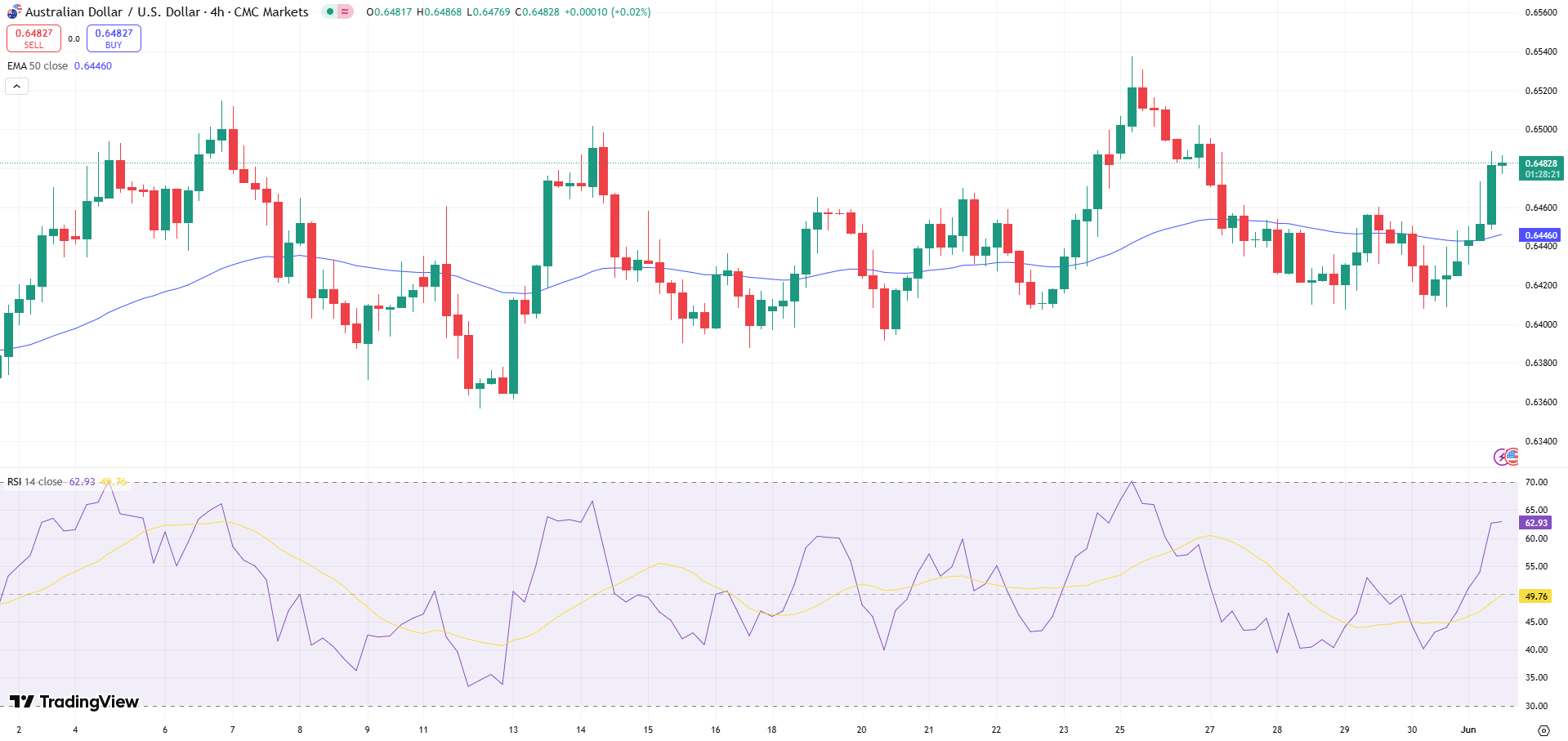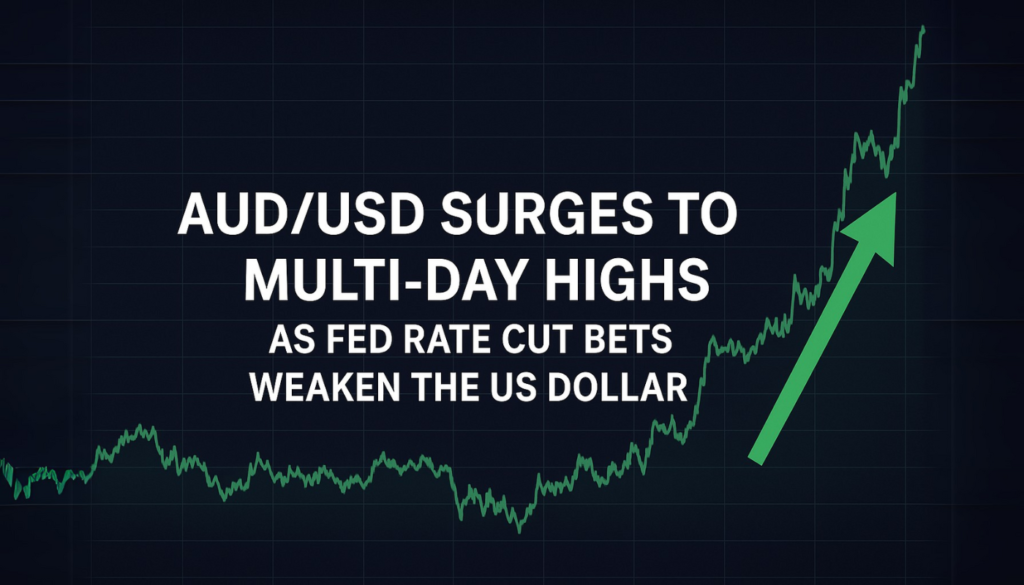The Australian dollar climbed to multi-day highs against the US dollar during the Asian session Monday, buoyed by growing expectations of US Federal Reserve rate cuts. Signs of cooling US inflation, combined with a dovish shift in market sentiment, have sparked fresh selling in the greenback.
Last week’s US Department of Labor data highlighted a softening labor market. Initial Jobless Claims for the week ending May 24 rose to 240,000, exceeding expectations of 230,000. Continuing claims also climbed to 1.919 million for the week ending May 17. These figures bolster market expectations that the Fed will move to ease borrowing costs as early as September.
- Key US data highlights:
- Initial Jobless Claims: 240K (vs. 230K consensus)
- Continuing Jobless Claims: 1.919M
RBA Cautions on Economic Outlook
Despite the Aussie dollar’s rally, gains are tempered by a cautious Reserve Bank of Australia (RBA). The central bank has acknowledged progress in taming inflation but remains wary of downside risks stemming from global trade tensions and domestic economic headwinds.
RBA Governor Michele Bullock has warned that the central bank stands ready to take additional action if economic conditions deteriorate further. This suggests that further rate cuts could be on the table in the near term, which could limit upside potential for the AUD.
- RBA policy signals:
- Inflation progress noted but risks persist
- Additional rate cuts possible if outlook worsens
Geopolitical Tensions Add to USD Weakness
The US dollar’s decline was exacerbated by geopolitical uncertainties and mixed policy signals from Washington. A US federal court recently blocked President Trump’s “Liberation Day” tariffs, ruling he lacked authority to impose broad duties on imports from nations with trade imbalances. However, a federal appeals court has temporarily paused this ruling to allow further review.

These conflicting signals, coupled with renewed US-China trade tensions and fiscal concerns, have undermined confidence in the dollar. The combination of a weaker greenback and cautious optimism about global trade has supported the Aussie’s advance.
- Key factors weighing on USD:
- Legal challenges to Trump’s tariffs
- Renewed US-China trade frictions
- Heightened fiscal and geopolitical risks
In summary, while AUD/USD has capitalized on a softer US dollar, the pair’s trajectory remains clouded by RBA caution and global uncertainties. Traders will watch closely for upcoming US and Australian economic data, as well as geopolitical developments, for further direction.


